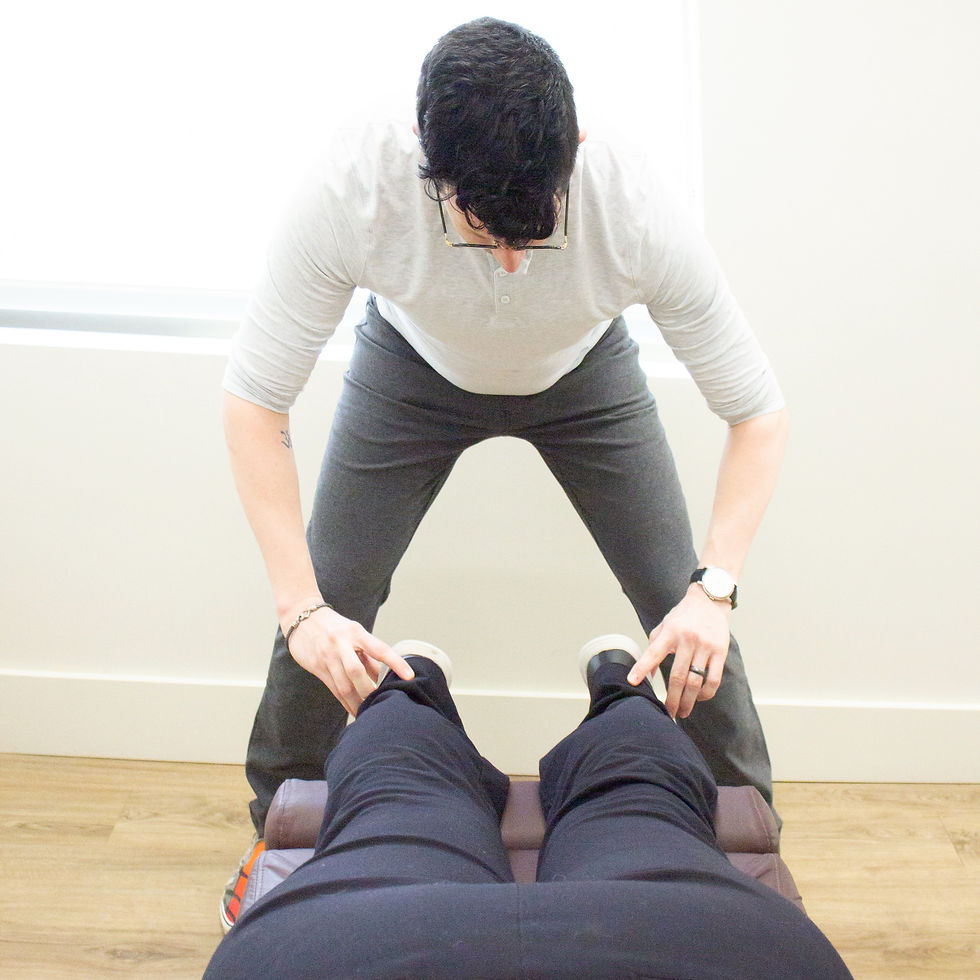Driving Your Pain
- Dr. Sean de Lima Thiel
- Oct 28
- 3 min read

Long drives can be relaxing, but sitting behind the wheel for hours often comes with a hidden price — stiffness, soreness, and pain. Whether it’s your neck, shoulders, lower back, or even hips, bad driving posture can take a real toll on your body. The good news? You can do something about it. With a few simple posture adjustments, stretches, and supportive treatments, you can drive comfortably and pain-free again.
Why Driving Causes Pain
Driving keeps you in a fixed position for extended periods. Unlike sitting at a desk, your body is also constantly compensating for road vibration, steering movements, and brake or pedal pressure. Over time, this can cause:
Rounded shoulders and a forward head posture
Tight hip flexors from prolonged sitting
Lower back strain from slouching or poor lumbar support
Neck tension and headaches from leaning forward or turning your head frequently
How to Improve Your Driving Posture
Before you even start the engine, take a moment to set up your seat properly:
Sit back fully so your spine touches the seatback.
Adjust your seat angle so your knees are slightly lower than your hips.
Keep the steering wheel close enough that your elbows are slightly bent — this avoids shoulder strain.
Raise the seat height so your eyes are centered on the windshield.
Support your lower back — if your seat lacks lumbar support, use a small cushion or rolled towel.
Simple Stretches for Drivers
After long drives, try these stretches to ease stiffness and restore flexibility:
1. Neck Rolls
Gently roll your head in a slow circle to release tension in your neck and shoulders. Do 3–5 circles in each direction.
2. Chest Opener
Stand tall, clasp your hands behind your back, and gently lift your arms. Hold for 20–30 seconds to stretch the chest and front shoulders.
3. Seated Twist
While seated, place your right hand on the outside of your left knee and gently twist your torso. Repeat on the other side.
4. Hip Flexor Stretch
Step one foot forward into a lunge and tilt your pelvis slightly forward. Hold for 20 seconds per side to open tight hips.
5. Shoulder Rolls
Roll your shoulders up, back, and down 10 times to loosen the upper back and relieve tension.
Exercises to Strengthen Supportive Muscles
Prevent future pain by strengthening the muscles that help maintain good posture:
Planks – Strengthen your core and stabilize your spine.
Bridges – Activate your glutes and protect your lower back.
Rows or band pulls – Counteract rounded shoulders by engaging your upper back.
Don’t Overlook Professional Care
Sometimes, even with proper posture and stretching, pain persists. That’s when it’s time to consider getting a chiropractic adjustment. Chiropractors can help realign your spine, release pressure on nerves, and restore proper movement in your joints. Many drivers report significant relief after chiropractic care — especially for chronic lower back or neck pain.
Regular chiropractic visits, combined with good posture and at-home mobility exercises, can help prevent discomfort from returning.
Final Thoughts
Pain from driving isn’t something you have to “just live with.” With mindful posture, regular movement, and supportive care, you can make every trip — short or long — more comfortable. Treat your body like part of your vehicle’s maintenance plan: regular check-ins keep it running smoothly.
If you want a little extra support for the stress your body feels from driving, book an appointment with us today!




Comments